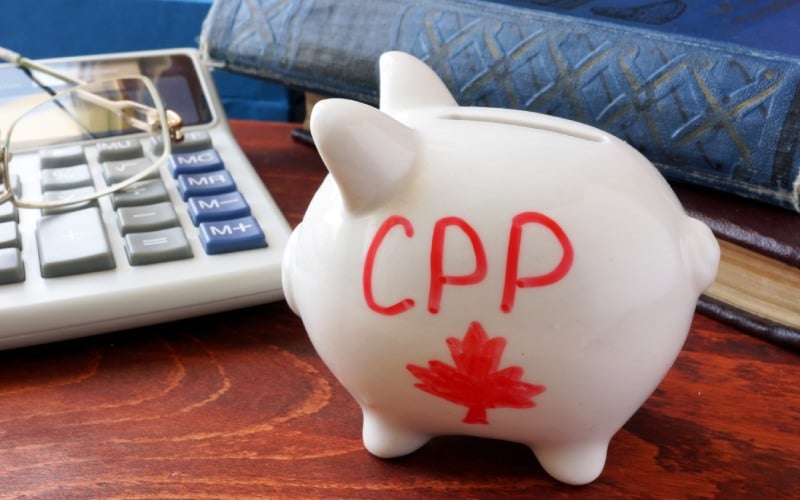As of 2024, a new second tier of earnings ceiling has been added for the CPP program. If your earnings fall within this tier, meaning that you are making more than the set threshold amount, your CPP deductions will be higher, as additional payroll deductions will apply.
Ultimately, this means middle- and higher-income earners will have increased payments going toward Canada Pension Plan contributions due to this new, second earnings ceiling.
Purpose
This new second earnings ceiling has been introduced as part of ongoing efforts to strengthen Canada’s retirement income system. Its purpose is to increase financial support for retirees for better overall financial stability.
Canada Pension Plan reforms began in 2019; changes are being phased in gradually. Those who contribute to the plan after 2019 will receive higher pension payouts after retirement. Canadians who are starting out in their careers and who will be contributing for 40 years will see the biggest impact on their retirement income from CPP. Their payments will increase by over 50% compared to those receiving pension payments now. However, anyone who contributes after 2019 will have increased benefits.
The new CPP changes will continue to be gradually phased in to ease the impacts while fulfilling the goal of boosting retirement income for Canadians.
Background on the Contributions System
Your contributions are calculated on your annual earnings, or net income if self-employed. A minimum income amount is set, below which CPP payments are not due, and a maximum amount.
The maximum amount is each January based on average Canadian wage increases and announced each November. The maximum threshold is known as the Year’s Maximum Pensionable Earnings (YMPE). Employers and employees share in paying CPP contributions, but self-employed people need to pay both portions on their own.
Previously, everyone earning over the minimum amount contributed a percentage of their income up to the YMPE, which was slightly increased each year to reflect economic factors. A single maximum amount only was set.
What Has Changed
Starting in 2024, there are two earnings ceilings in this enhanced pension plan.
Under the threshold, which in 2024 has been set at $68,500, the first tier or ceiling only applies, so people earning under this amount will not be affected. Workers will continue to contribute a defined percentage of their earnings to CPP, just like before, with no program change.
However, people earning more than that amount will have a second contribution level apply, which has a different maximum; for 2024, that will be $73,200. These workers will pay 4% on their second-tier earnings, which is the amount they earn between $68,500 and $73,200.

What Has Not Changed
Changes will not affect the eligibility criteria for retirement pension, post-retirement benefits, disability pension and survivor’s pension.
Self-employed people will still continue to pay both portions of employer and employee amounts.
Impact on Pharmacy Owners as an Employer
Employers will continue to match employees’ pension earnings as a part of the policy, so the new, second threshold will affect employers as well as employees.
Employers experienced the phased increase starting in 2019. From that year until 2023, both employees and employers had a rise in contribution rates of just under 1%.
Self Employed Pharmacists
Freelancers and self-employed people are still responsible for paying both portions of their CPP dues, for a combined 11.9% of income for the first tier and 8% for the second.
Examples
Be aware of taxable benefits, bonuses or overtime, and other factors that will impact your taxable income. Below are two examples to show how the second CPP tier impacts the CPP contributions due: one at the threshold where the second CPP payment does not apply, and one where the maximum second CPP payment applies.
Gross Revenue 2024 – $68,500
Basic Exemption Amount – $3,500
Employee, Employer Rate – 5.95%
Or Self-Employed Contribution Rate – 11.90%
Additional Amount CPP2 – $0.00
Employee / Employer Share – $3,867.50
Amount For Self-Employed – $7,735.00
Gross Revenue 2024 – $78,500
Basic Exemption Amount – $3,500
Employee, Employer Rate – 5.95%
Or Self-Employed Contribution Rate – 11.90%
Additional Amount CPP2 2024* – $188.00 (Maximum Annual Contribution)
Employee / Employer Share – $4,055.50
Amount For Self-Employed – $7,923.00
Note that the estimated maximum annual CPP2 amount for 2025 is $388.

Questions?
If you have questions about how these changes may impact you personally or your pharmacy business and employees, Pharma Tax can answer them, and guide you on ways to save money on your taxes to keep more of your hard-earned money in your pocket.
- Business Overhead Insurance: What it is & Why You Need It - October 18, 2024
- How Long Do I Need to Keep Receipts? - October 5, 2024
- What is the Canada Child Benefit? - September 27, 2024


